For 1990-2009 cars only
Special Tools
| • | EN-7872 Magnetic Base Dial Indicator |
| • | EN-8087 Cylinder Bore Gage |
For equivalent regional tools, refer to Special Tools.
- Clean the sealing material from the gasket mating surfaces (2) with a suitable tool (1).
- Clean the engine block and lower crankcase in a cleaning tank with solvent appropriate for aluminum.
- Flush the engine block with clean water or steam.
- Clean the oil passages.
- Clean the blind holes.
- Spray the cylinder bores and the machined surfaces with engine oil.
- Inspect the threaded holes.
- Clean the threaded holes with a rifle brush.
- Use a straight edge (1) and a feeler gage (2) to inspect the deck surface for flatness. Carefully machine minor irregularities. Replace the block if greater than 0.254 mm (0.010 in) must be removed.
- Inspect the oil pan rail for nicks. Inspect the front cover attaching area for nicks. Use a flat mill file to remove any nicks.
- Clean the sealing material from the gasket mating surfaces on the lower crankcase engine block side with a suitable tool (1).
- Clean the sealing material from the gasket mating surfaces on the lower crankcase oil pan side with a suitable tool (1).
- Inspect the mating surfaces of the transmission face.
- Use the following procedure in order to measure the engine block flange runout at the mounting bolt hole bosses:
- Using the EN-8087 gage (1) , inspect the cylinder bores for the following conditions:
- If the cylinder bores are out of specification, replace the engine.
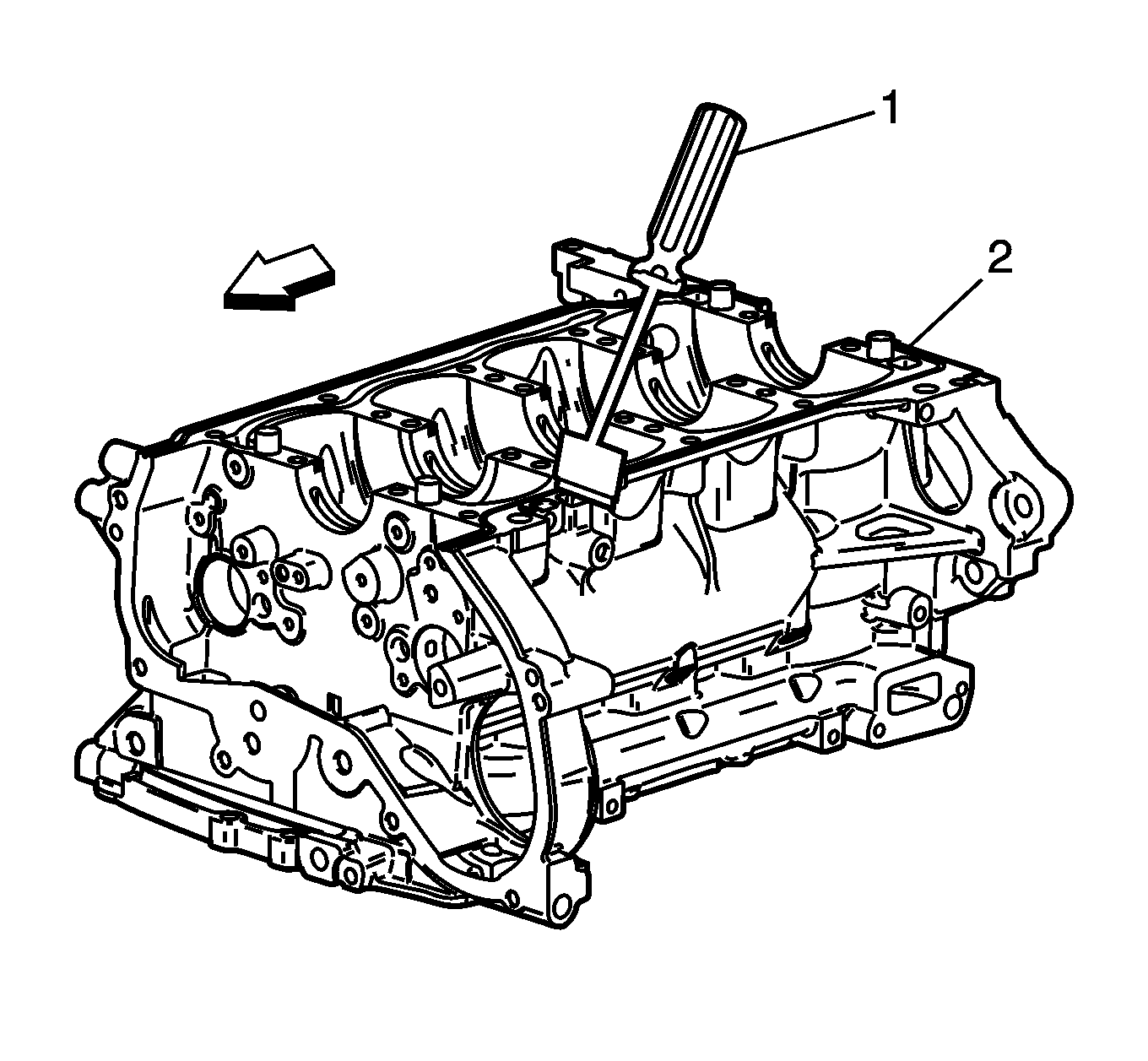
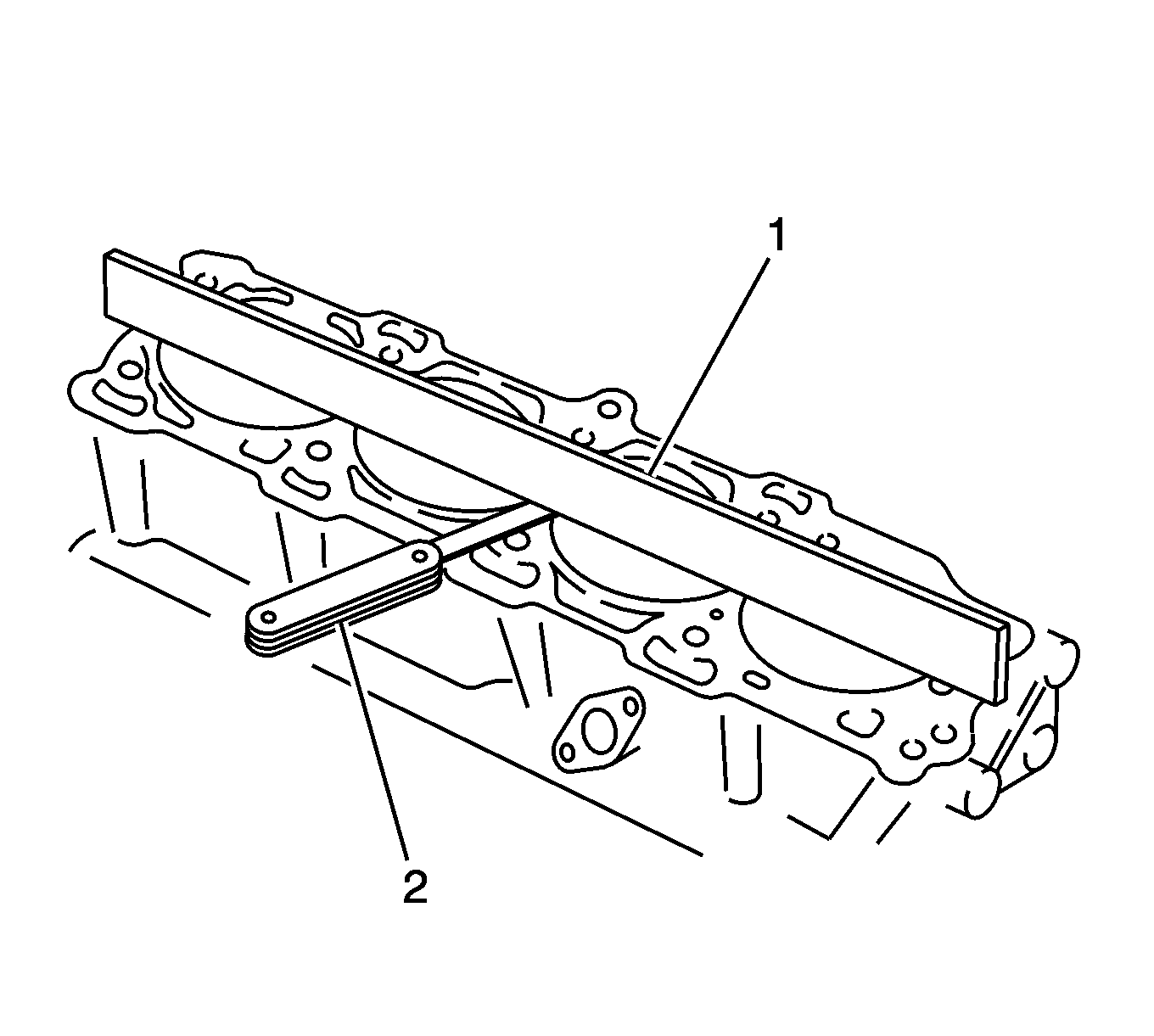
Note: Do not attempt to machine the lower crankcase to engine block surfaces.
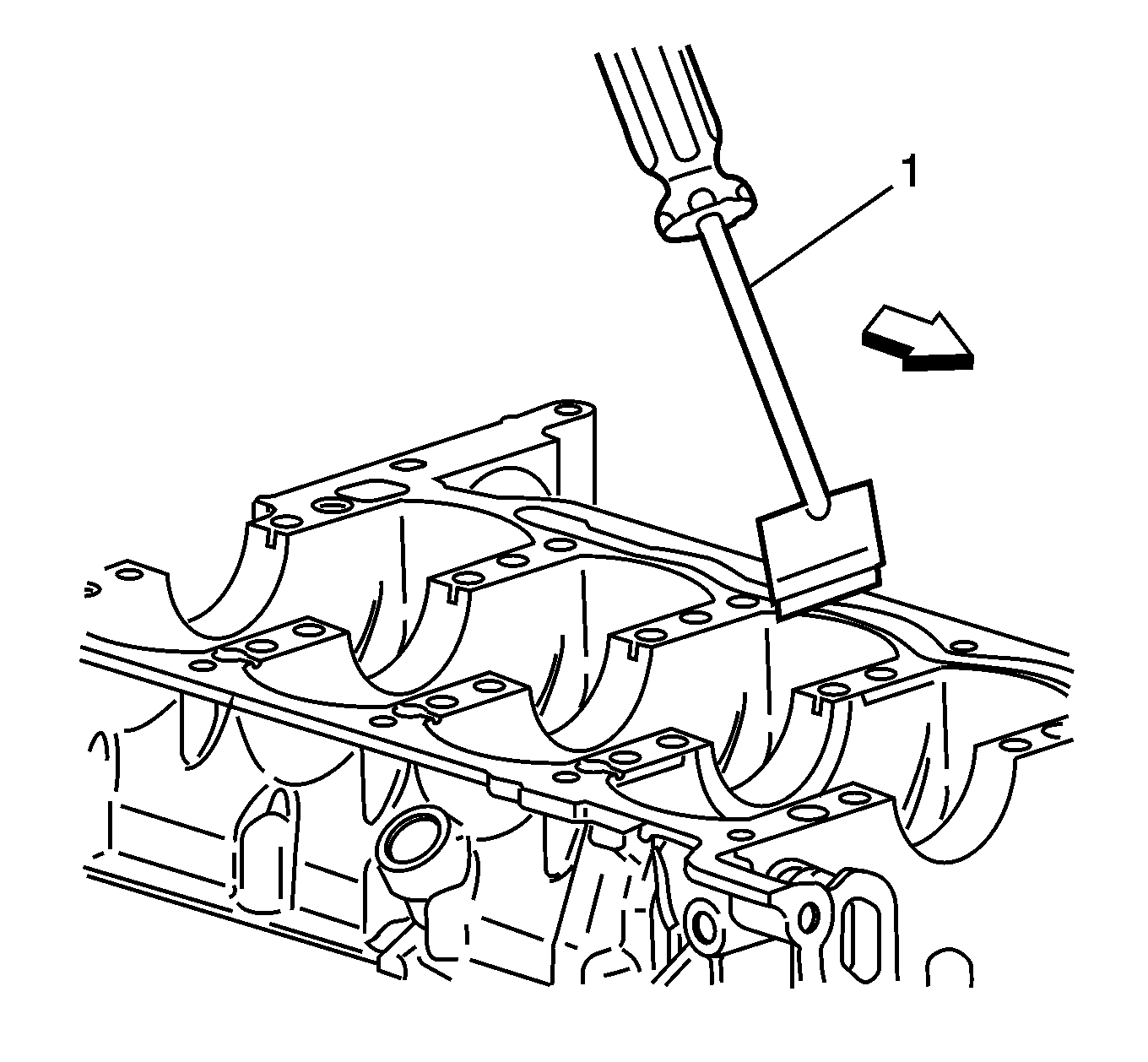
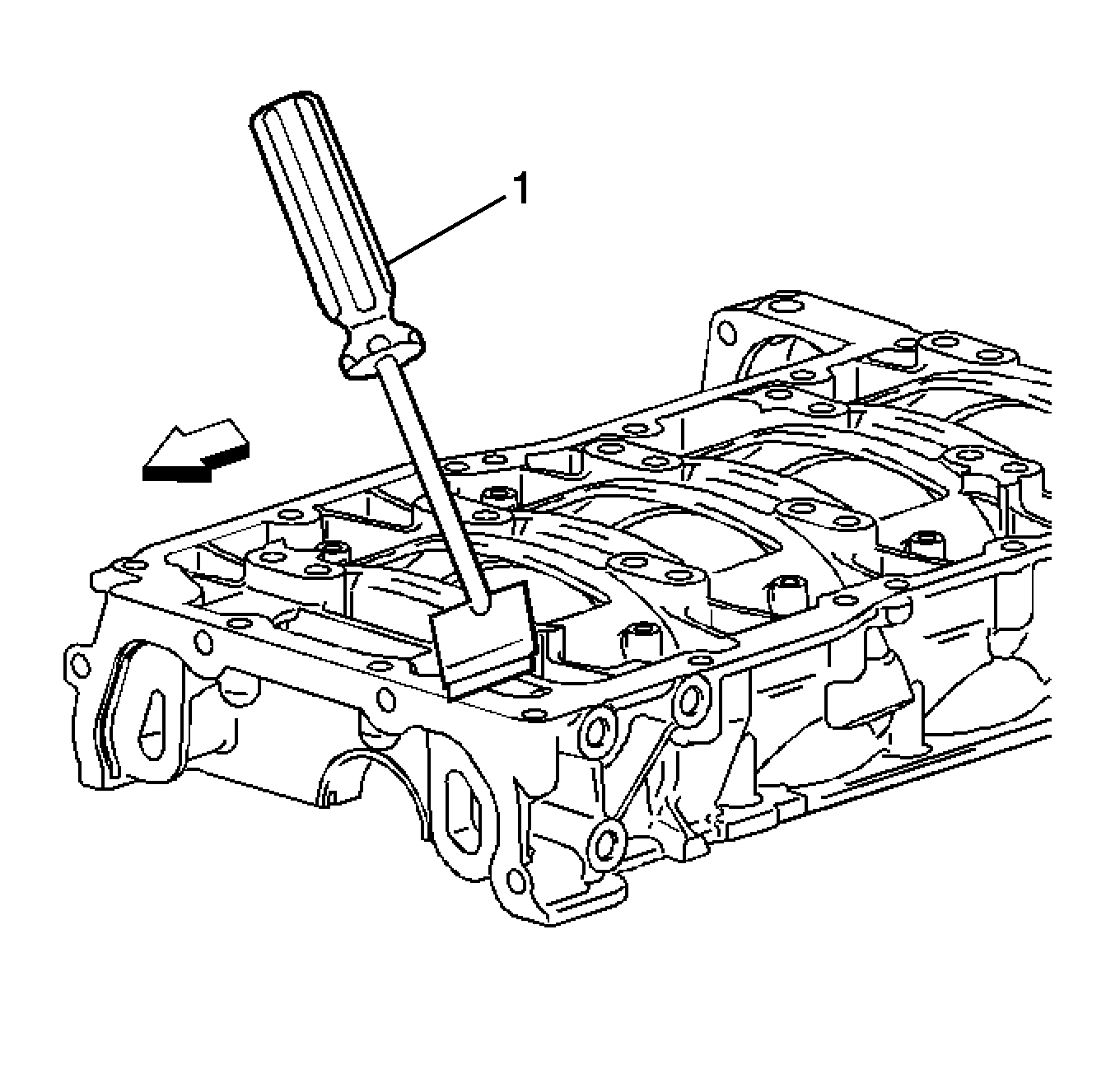
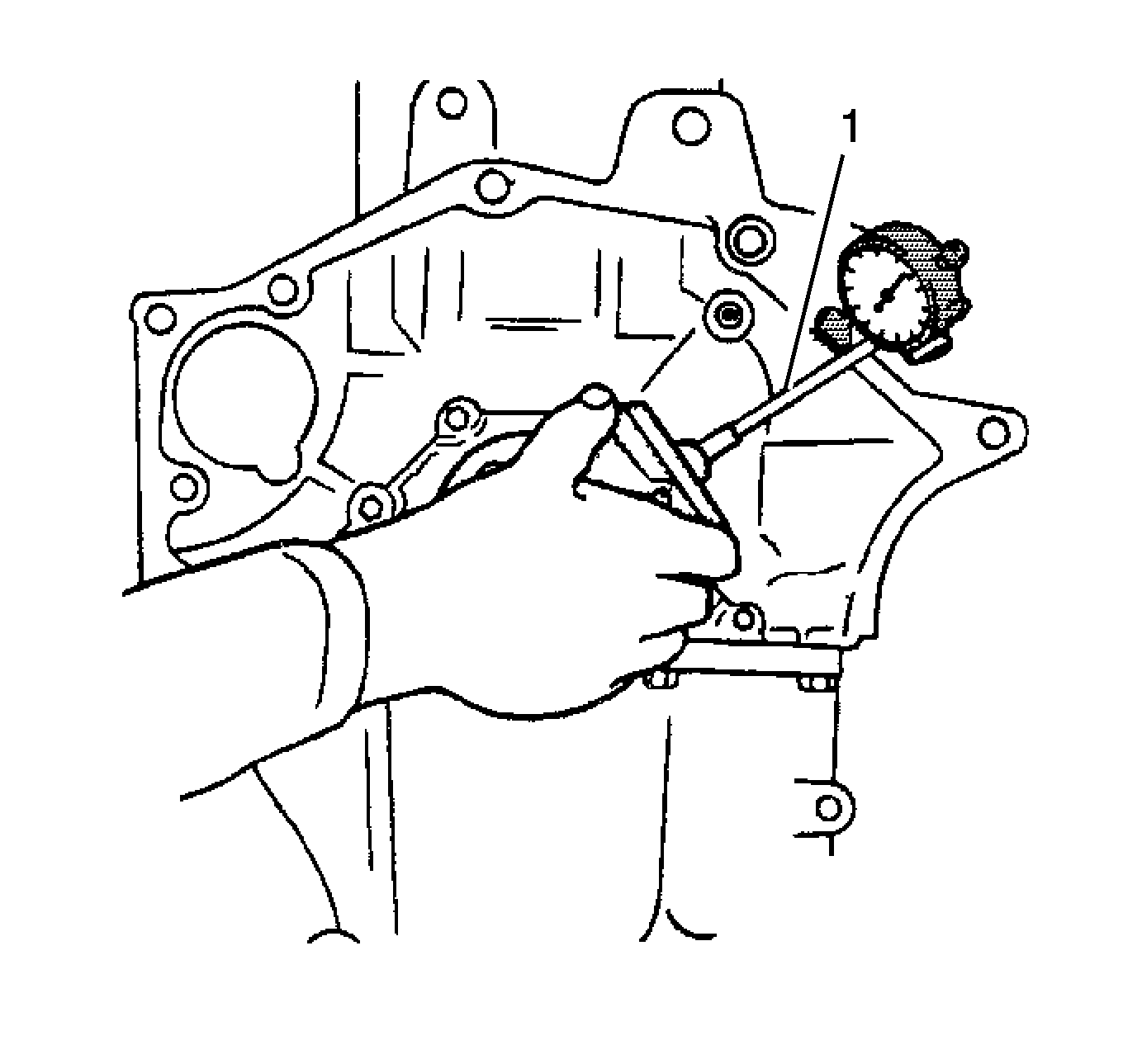
Caution: A broken flywheel may result if the transmission case mating surface is not flat.
| 14.1. | Temporarily install the crankshaft and upper bearings. Measure the crankshaft flange runout using the EN-7872 dial indicator (1). |
| 14.2. | Hold the gage plate flat against the crankshaft flange. |
| 14.3. | Place the dial indicator stem on the transmission mounting bolt hole boss. Set the indicator to 0. |
| 14.4. | Record the readings obtained from all of the bolt hole bosses. The measurements should not vary more than 0.203 mm (0.008 in). |
| 14.5. | Check the crankshaft flange runout again if the readings vary greater than 0.203 mm (0.008 in). |
| 14.6. | Remove the crankshaft and bearings. |
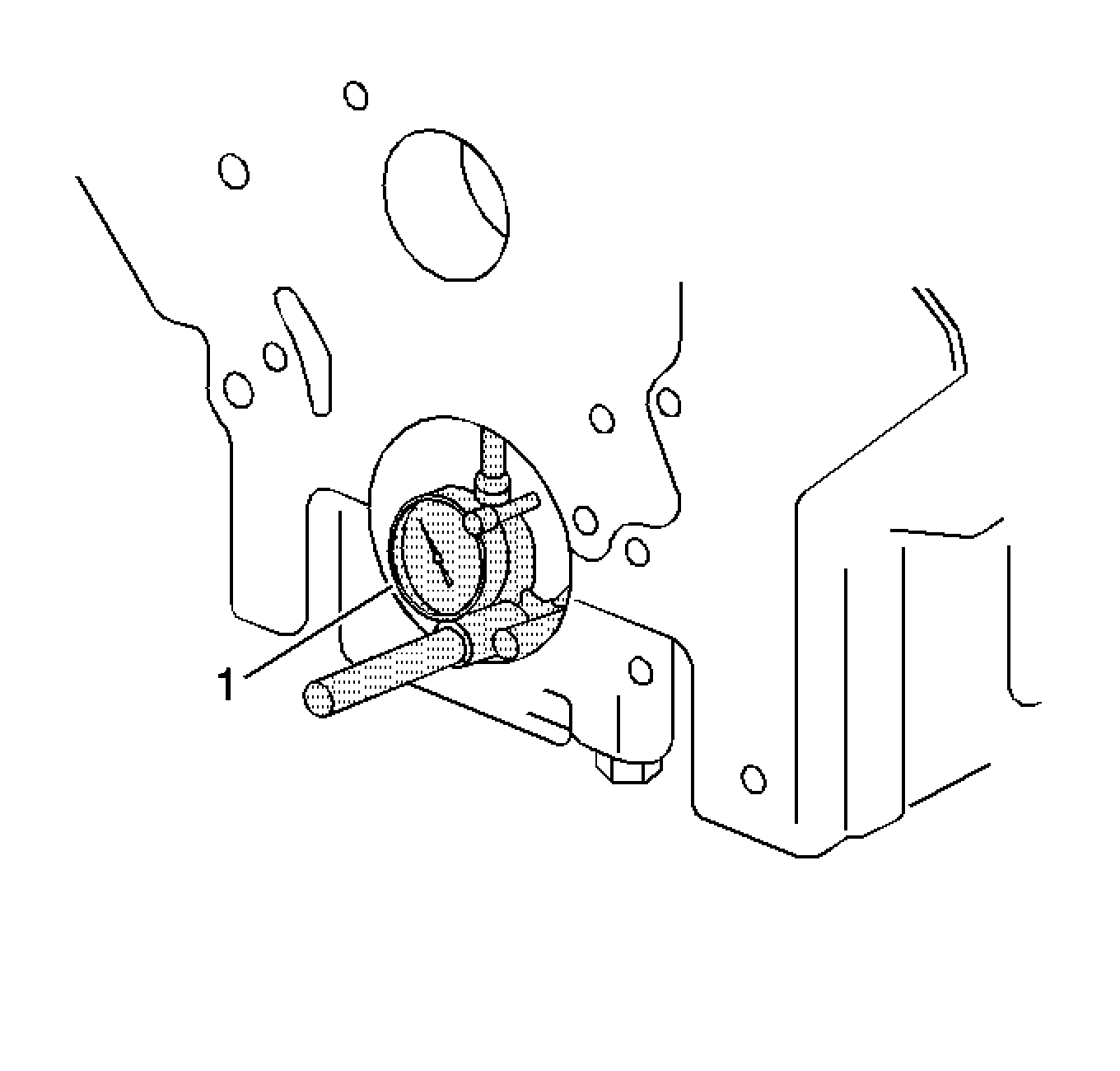
| 14.7. | Install the bed plate and bolts. Tighten the bed plate bolts to specification. |
| 14.8. | Inspect the crankshaft main bearing bores. Use the EN-8087 gage (1) to measure the bearing bore concentricity and alignment. Refer to Engine Mechanical Specifications. |
| 14.9. | Replace the engine block and bed plate if the crankshaft bearing bores are out of specification. |
| 14.10. | Remove the bed plate. |
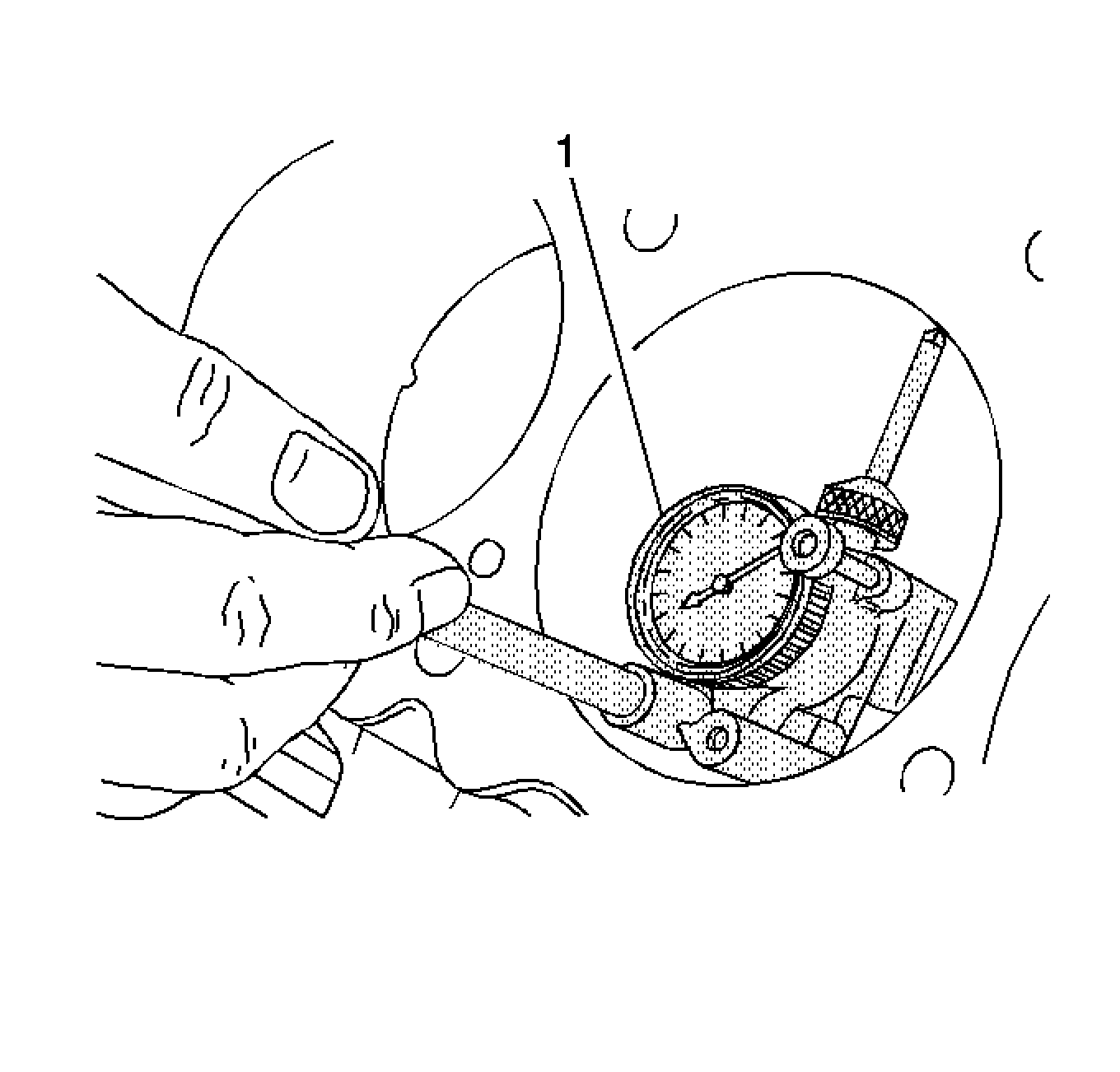
| • | Wear |
| • | Taper |
| • | Runout |
| • | Ridging |
